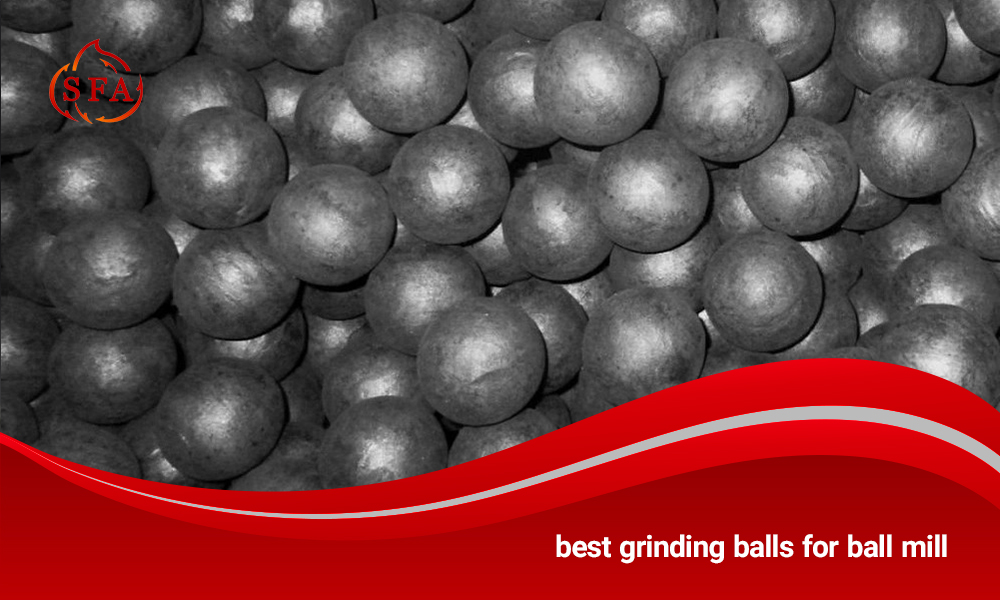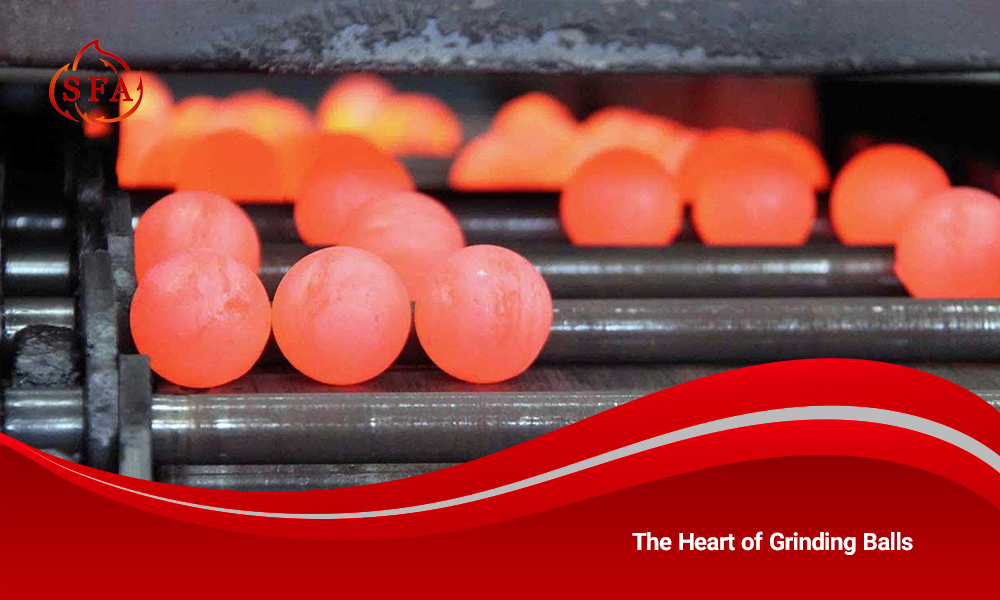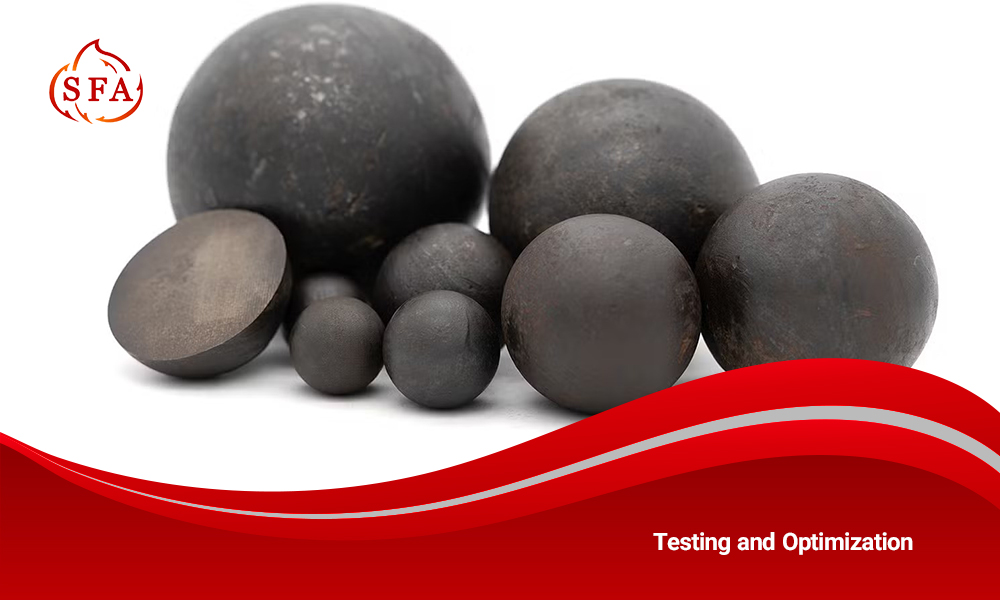

How to Choose the Best Grinding Balls for Your Ball Mill
Grinding balls are the backbone of every ball mill. They directly grind raw materials into fine powders for industries such as mining, cement, pharmaceuticals, and ceramics. The efficiency of these milling balls has a direct impact on product quality, equipment life, and operating costs. Selecting the best grinding balls for your ball mill requires understanding their composition, size, hardness, density, and compatibility with both the mill and the material being processed.
Poor choices often result in inefficiency, contamination, or excessive liner wear. The right choice, however, ensures top performance, reduced costs, and longer equipment lifespan. This article—supported by insights from SFA specialists—outlines the essential factors when selecting grinding balls, with special focus on cement grinding balls, pharmaceutical milling, and other industrial uses.
The Role of Grinding Balls in Ball Mills
Grinding balls are spherical media that move freely inside a mill, colliding with raw material and liners to break particles through impact and attrition. Their performance depends heavily on the quality, size, and appropriateness of the selected balls.
- In cement mills, balls must withstand heavy wear and abrasive clinker.
- In pharmaceutical production, contamination-free balls are essential for maintaining product purity.
- In mining, durability and hardness are vital for grinding abrasive ores.
The best grinding balls are always customized to milling conditions and application requirements, ensuring efficiency and durability.
Key Factors in Selecting Grinding Balls
When choosing the best grinding balls for ball mills, industries must evaluate the following:
- Material Composition (steel, ceramic, or stainless steel)
- Hardness (resistance to wear and deformation)
- Density (energy transfer during collisions)
- Diameter (coarse vs. fine grinding needs)
- Cost and Availability
Finding the balance between performance and practical constraints is the core of an effective grinding ball strategy.


Material Composition: The Foundation of Grinding Balls
Material is the most critical parameter influencing strength, durability, and compatibility.
- Steel Balls
- Commonly forged or cast high-chrome steel
- Excellent hardness and abrasion resistance
- Ideal for cement and mining
- Downside: metallic contamination in sensitive products
- Ceramic Balls (Alumina & Zirconium Oxide)
- Minimize contamination
- Alumina: affordable, good hardness
- Zirconium oxide: high density, superior hardness, great for ultra-fine powders
- Widely used in ceramics, electronics, and biomedical applications
- Stainless Steel Balls
- Strong corrosion resistance
- Suitable for wet and dry grinding
- Used in pigments and paints, but require careful cleaning to avoid contamination
Expert Insight: In one real project, Sepahan Foolad (SFA) optimized alloy selection for cement grinding balls. This reduced annual operating costs for plants by up to 18%, proving that material composition directly impacts performance and cost savings.
Application-Specific Considerations for Grinding Balls
There are certain requirements in different industries for grinding balls depending on the material being processed and the desired result. Some of the prime applications are mentioned below:
- Cement Production: Cement grinding balls, oftentimes high-chrome steel, are built to withstand wear and abrasion. Ball mill balls with increased hardness withstand intense wear and protect ball mill liners. Large-diameter cement grinding balls are typically used to deal with coarse feed material.
- Pharmaceutical and Food Processing: grinding balls for ball mill manufacturers highlight the need for clean milling balls in these industries. Ceramic ball mills, particularly zirconium oxide, are best grinding balls for ball mill in these industries because of their inertness and capacity to grind into ultra-fine powder without transferring impurities. Stainless steel ball mill balls can be used where there is little sensitivity, but cleanliness is crucial to avoid contamination.
- Ceramics and Electronics: Ceramic milling balls, such as alumina and zirconium oxide, are ideal for the grinding of ceramics and electronics materials. Process requirements include close particle size control and low contaminations in order to preserve product quality, complemented by ball mill liners to reduce wear.
- Pigments and Paints: Stainless steel or ceramic grinding balls have widespread uses in pigment production, where wet grinding is standard. Best grinding balls for ball mill must resist corrosion due to liquid media and deliver regular particle size reduction to achieve uniform dispersions, with little wear on ball mill liners.
Cost and availability
Cost and availability are practical factors in choosing best grinding balls for ball mill. Steel ball mill balls, are typically more affordable and readily available, and therefore become a go-to option for cement grinding balls and other sectors. However, their contaminating capacity makes them less suited for sensitive processes. More expensive ceramic grinding balls, like zirconium oxide, are more effective in high-energy or high-purity milling. Alumina milling balls are a budget-friendly alternative for less demanding applications. Considering the grinding ball lifespan, with long-lasting materials like zirconium oxide paying for themselves in reduced replacement expenses and less ball mill liner wear. Availability can affect decisions, especially for use on special applications with unique sizes or materials.
Testing and Optimization
Selecting the best grinding balls for ball mill is a matter of trial and error. Grinding ball manufacturers recommend laboratory-scale testing to evaluate different materials, sizes, and blends under actual milling conditions. This will identify the ideal configuration for the target particle size, throughput, and energy efficiency with minimal wear on ball mill liners. Companies as Union Process recommend monitoring wear rates and contamination levels during testing to ensure long-term performance. Working with suppliers who provide technical assistance to tailor grinding balls to specific needs is recommended. For example, some of manufacturers have cement grinding ball alloy optimization to match the chemistry of the balls with the milled product, improving efficiency and cost savings.


Conclusion
Choosing the best grinding balls for ball mill is a critical decision that influences the efficiency of the grinding ball grinder, product quality, and ball mill liner lifespan. Taking into consideration material composition, hardness, density, diameter, and application-specific requirements, you can select ball mill balls that perform to their highest level. Industry leaders such as SFA offer vital input and products to facilitate the process, especially for such applications as cement grinding balls and contamination-free milling balls. Whether grinding clinker in cement manufacturing or manufacturing fine powders for pharmaceutical applications, appropriate grinding balls ensure your ball mill runs at optimal performance, producing consistent outputs while reducing costs and downtime. Our expertise advisors will help you to choose the best grinding balls for ball mill. For additional information, contact us.


